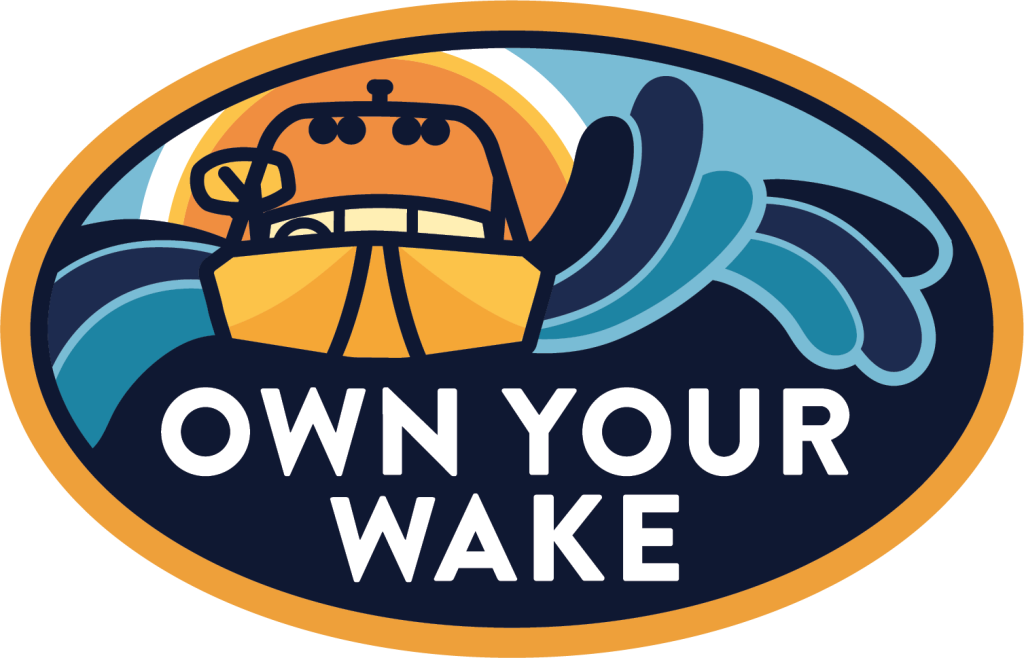
New! Research Results
In August of 2025, MLR released key findings from the first phase of the Healthy Waters Initiative (HWI). The Healthy Waters Initiative is supported by independent, expert-reviewed research at the University of Minnesota’s St. Anthony Falls Laboratory. Review the results on the MLR website.
The research team will present details on phase two of the HWI in a webinar in August 26th, 2025 at 6pm CST. If you are interested in joining, you can register here.
Own Your Wake Initiative
Minnesota’s waters are for everyone – whether you are driving a boat or personal water craft, paddling a canoe or kayak, or just going for a swim. If the craft you are operating creates a wake, you are responsible for it. To “own your wake” means you are not throwing waves onto the shore and docked boats or creating a dangerous situation for paddlers and anglers as you pass. Remember, shared resources require shared responsibility.
Minnesota Department of National Resources “Own your Wake” information
Wake Responsibility Campaign
Wake Boats
Many boaters operate their boats safely, some are careless when it comes to water safety and creating an adverse impact on the aquatic environment. The Wake Boat, if operated without care, can be very destructive. Tanks at the back of these boats take on large amounts of lake water to increase their weight. This design allows the boat to ride bow-up and stern-down and this, along with a large motor and propeller pointing at a downward angle produce strong high energy wakes which impact the lake ecosystem.
Studies show that the lake ecosystem can harm with one pass of a wake boat and multiple passes can cause long-lasting damage by eroding shorelines, impacting lake bottoms and the quality of water. The downward angle of the prop-wash causes algae blooms when sediment is stirred up and reintroduces sequestered phosphorus and nitrates. Increased turbidity impacts native flora and fauna as native plants are often uprooted and fish nests destroyed.
Video demonstrating the impact of Wake Boats on aquatic life and vegetation along lake bottoms
A recent study by researchers in the University of Minnesota College of Science and Engineering’s St. Anthony Falls Laboratory (see link below) found that popular wake surf boats require a greater distance from the shoreline compared to more typical recreational boats. This distance is needed to reduce the potential impact of their larger waves.
University of Minnesota research on waves created by recreational boats
The current recommendation of 200 feet from shore, recommended in the “Own Your Wake” initiative from the Minnesota Department of Natural Resources and the “Wake Responsibly” campaign by the WSIA, are not aligned with the University of Minnesota’s St Anthony Falls Lab study results. The University of Minnesota St Anthony Falls Lab study states “operational distances greater than 500 feet are required for the wake waves generated by a wake surf boat to attenuate to similar wake wave characteristics as the non-wake surf boat reference.”
2015 Water Sports Industry Association commissioned report stated that “With the growing popularity of wake sports there has been a rise in concern over the potential effect of the associated wakes on shorelines. A study has been completed and reported here aimed at building an understanding of wake-sport wakes and how they fit into the spectrum of boat wakes in general as well as how those wakes compare to wind-driven waves.”
October 2024 MLR Wake Boat Impact in Minnesota
MLR Long Term Strategy to Address Wake Surfing Impact

